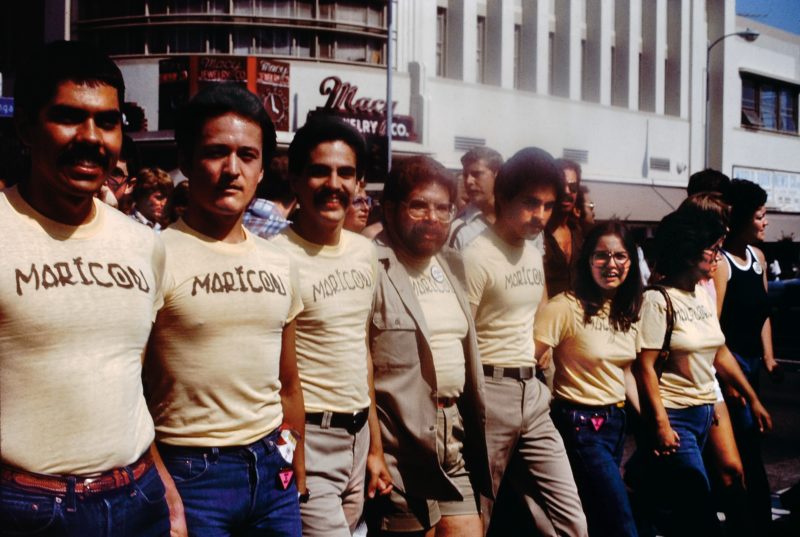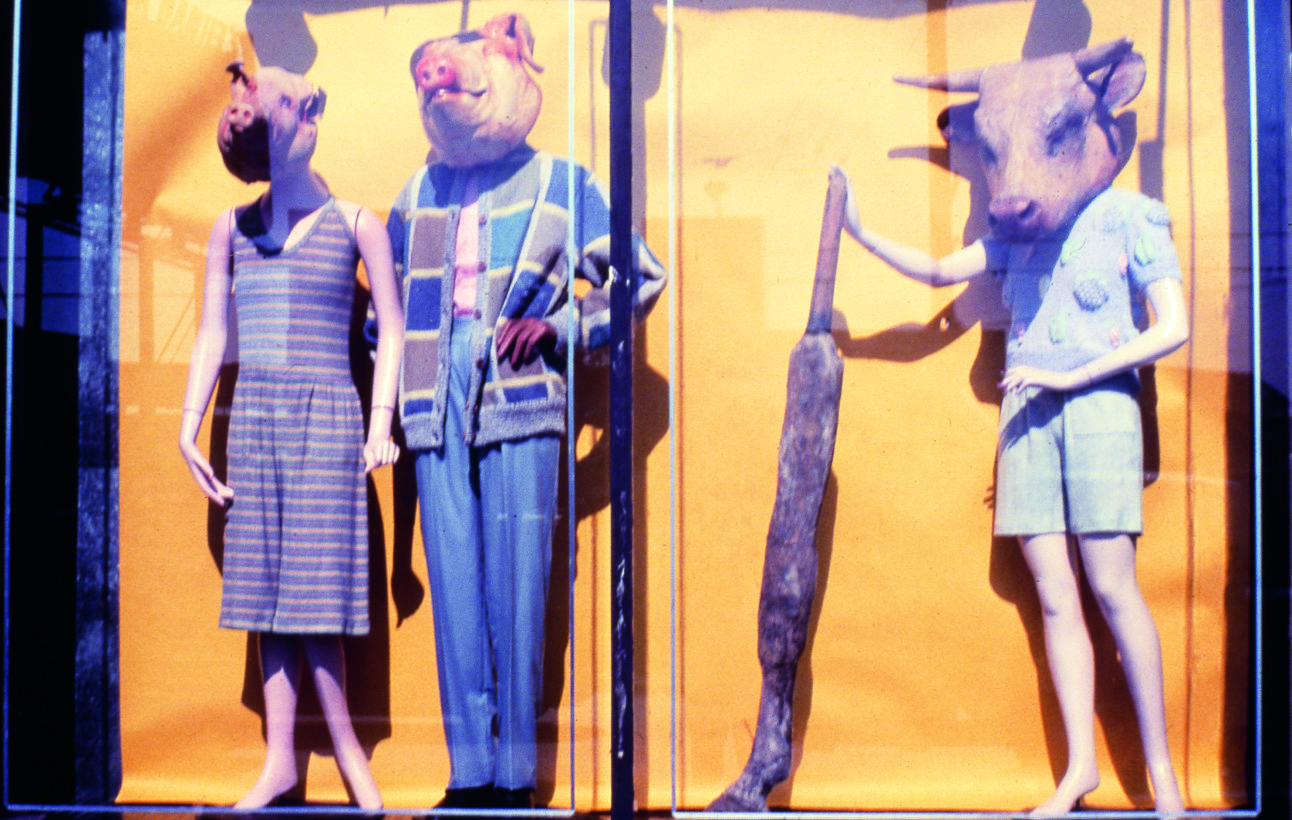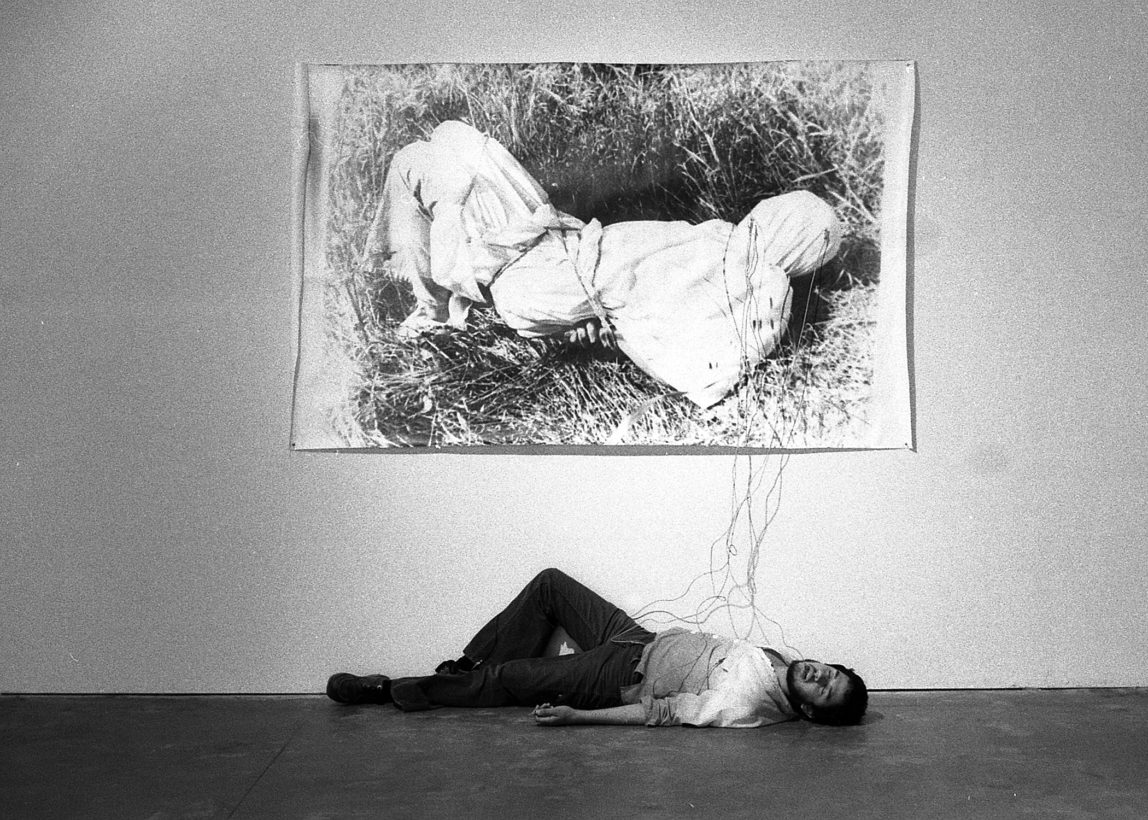Past Event
Opening Reception featuring Axis Mundo: Queer Networks in Chicano L.A. and Place, Color y Sand
Spring Exhibitions Opening Reception
On View: Saturday, April 6 – Sunday, June 2, 2019
Opening: Saturday, April 6, 2019
11 AM – 5 PM: Gallery Hours
5 – 8 PM: Opening Reception
5 PM: Artist Talk
with Place, Color y Sand artists Carlos Rosales-Silva & Eric Santoscoy-Mckillip
6 PM: Curators’ Walk-through of Axis Mundo with C. Ondine Chavoya and David Evans Frantz
Join curators C. Ondine Chavoya and David Evans Frantz for a walk-through of Axis Mundo: Queer Networks in Chicano L.A. on the exhibition’s opening night.
About Axis Mundo: Queer Networks in Chicano L.A.
Exhibition Details▼
Axis Mundo: Queer Networks in Chicano L.A. is a traveling exhibition that explores the intersections among a network of over fifty artists. This historical exhibition is the first of its kind to excavate histories of experimental art practice, collaboration, and exchange by a group of Los Angeles based queer Chicanx artists between the late 1960s and early 1990s. While the exhibition’s heart looks at the work of Chicanx artists in Los Angeles, it reveals extensive new research into the collaborative networks that connected these artists to one another and to artists from many different communities, cultural backgrounds, sexual orientations, and international urban centers, thus deepening and expanding narratives about the development of the Chicano Art Movement, performance art, and queer aesthetics and practices.
Axis Mundo: Queer Networks in Chicano L.A. is curated by C. Ondine Chavoya and David Evans Frantz as part of Pacific Standard Time: LA/LA, an initiative of the Getty to encourage ambitious research and exhibitions at Southern California cultural institutions. The exhibition is organized by ONE National Gay & Lesbian Archives at the USC Libraries in collaboration with The Museum of Contemporary Art, Los Angeles, and organized as a traveling exhibition by Independent Curators International (ICI). Lead support for Axis Mundo is provided through grants from the Getty Foundation. This exhibition is supported in part by an award from the National Endowment for the Arts. Additional support has been provided by The Calamus Foundation of New York, Inc., the City of West Hollywood through WeHo Arts—the City’s Arts Division and Arts & Cultural Affairs Commission, Kathleen Garfield, the ONE Archives Foundation, the USC Libraries, and the Luis Balmaseda Fund for Gay & Lesbian Archives, administered by the California Community Foundation. Funding for the exhibition tour has been provided by the generous support from ICI’s International Forum and the ICI Board of Trustees.
Organized in collaboration with Latino Art Now! and Inter-University Program for Latino Research at the University of Houston. Additional support has been made possible in part through the City of Houston and the Texas Commission on the Arts.
![]()
Curator Bios▼
C. Ondine Chavoya is Professor of Art History and Latina/o Studies at Williams College in Williamstown, Massachusetts. He is the author of numerous texts on Chicano avant-garde art, video, and experimental cinema, and is a leading figure in the field of Latinx art history and visual culture. His curatorial projects have addressed issues of collaboration, experimentation, social justice, and archival practices in contemporary art. Chavoya has organized exhibitions and events including Asco: Elite of the Obscure, A Retrospective, 1972-1987, the first museum retrospective to present the wide-ranging work of the performance and conceptual art group Asco (2011-2013) with Rita Gonzalez, and Robert Rauschenberg: Autobiography (2016) and Michel Auder: Chronicles and Other Scenes(2004) with Lisa Dorin.
David Evans Frantz is Associate Curator of the Palm Springs Art Museum. From 2011 to 2018 he was the curator at ONE National Gay & Lesbian Archives at the USC Libraries. His curatorial projects examine alternative art movements, queer politics and culture, historical erasure, and archival practices in contemporary art. At ONE he founded a visual arts program that presented historical exhibitions and commissioned artists to respond to ONE’s collections. In 2011, Frantz co-curated with Mia Locks the exhibition Cruising the Archive: Queer Art and Culture in Los Angeles, 1945–1980 as a part of the first Pacific Standard Time: Art in L.A., 1945–1980. In 2014, he was the curator of the show-within-a-show, Tony Greene: Amid Voluptuous Calm, part of the Made in L.A. biennial at the Hammer Museum. Most recently he co-curated with C. Ondine Chavoya Axis Mundo: Queer Network in Chicano L.A., a collaboration between ONE Archives and The Museum of Contemporary Art, Los Angeles, for Pacific Standard Time: LA/LA.
About Place, Color y Sand
Exhibition Detail▼
Throughout the Southwest U.S. and Borderland, sand is a protectant when mixed with mortar and applied to the exterior of adobe or cinder block. Sometimes it is painted over in pinks, oranges, purples, and blues. Sometimes a hand-painted logo that is recognizable but not exact is painted over this sand-coated surface. Sand is an irritant and abrasive to the skin when hurled by the wind. When sand is mixed with the force of wind, it makes hard edges soft. Sand is an aggregate of rock, minerals, and material, a sum of parts. At times, sand is the color of our skin. It creates an unmistakable sound when it is scraped from a wheelbarrow and used as glue for a rock wall being built.
Carlos Rosales-Silva and Eric Santoscoy-Mckillip trace and confront their personal histories and identities within the Latinx, Mexican-American, and Chicanx Cultures in their practices, naturally leading to points of intersection in their work. The use of place, color, and sand is found in both of their work. Sand is used as a signifier for the wall, the street, and something applied by hand that also comes from the land. Having both grown up in the southwest and on the border, color is ingrained in both artists’ minds and pulled from daily sunsets, neon green paletas, and plastic flowers bought downtown.
Place, Color y Sand is a selection of paintings and wall sculptures by Carlos Rosales-Silva and Eric Santoscoy-Mckillip. It is a conversation of the formal and conceptual intersections between the artists and how their approaches have led to each develop specific visual languages that meet and cross paths in their practice and work. Along with showing discreet objects, the artists will collaborate on a mural in Grace R. Cavnar Gallery.
Artist Bios▼
Carlos Rosales-Silva was born in El Paso, Texas and has lived throughout Texas. Carlos received his BFA from the University of Texas at Austin. He considers oral histories from Mexican and Indigenous peoples, post-colonial historical texts, and spaces that are safe and inclusive for people of color the foundation and central cosmology of his work. Carlos has exhibited throughout Texas, and in Los Angeles, Miami, Minneapolis, Chicago, Kansas City, and New York City and was most recently an artist in residence at Artpace in San Antonio, Texas and at Pioneer Works in Brooklyn, NY. Carlos is currently pursuing an MFA at the School of Visual Arts in New York, NY.
Eric Santoscoy-Mckillip was born in El Paso, Texas in 1989. He received his BFA from the University of Texas at Austin in 2011, a Master of Interdisciplinary Studies from the University of Texas at El Paso in 2015 and an MFA from the New York University in 2017. Moving between painting and sculpture, Eric’s work is an examination of place, identity, and memory through the use of color, symbols, and textures by reclaiming what has already been reclaimed. The transitions between these elements shift, overlap and blur to reflect the in-between space of the borderland, continually changing histories and identities of the geographic region and himself.





